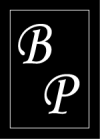WHAT ONE PERSON CAN DO TO GET PEOPLE READING
THE STORY OF ALVIN IRBY AND BARBERSHOP BOOKS
Alvin Irby never wanted to become a teacher, the same profession his mother held for over 30 years in the Little Rock, Arkansas school district in which he grew up. But the adults in Irby’s life saw potential in him that he couldn’t see in himself. “My high school principal, one day during my senior year, he told me, ‘You’re going to be a better principal than I ever was,’” Irby recalls. “And I remember looking at him and saying, ‘Never! I will never go into education!’”
Yet his principal proved prescient. Irby did go into education, and after teaching for several years, he founded Barbershop Books, a reading incentive program that connects young black boys, ages four to eight, to books in male-centered reading spaces. “Barbershop Books’ primary goal is to increase the out-of-school reading time among black boys and to help young black boys identify as readers,” Irby says. “A lot of reading programs are focused on reading skills. That’s not what Barbershop Books is about. Our program is about connecting fun books to a male-centered space, and involving black men in boys’ early reading experiences.”
The seeds for the idea were planted when Irby was a high school sophomore. “In tenth grade, I was in regular English class,” he says. “We were reading short stories and doing spelling lists. This is what we were doing in tenth grade English. And I remember being bored out of my mind.”
So he went to his guidance counselor and requested a more challenging class. “When I switched into this pre-AP class, one of the first things that I noticed when I looked around, or a question that popped in my head, was, ‘Where did all of these white people come from?’” Irby says. “My regular English class was all black. When I switched into this advanced class, all of a sudden, there were white kids everywhere. I didn’t even know they were in the school! And then I started to wonder, why are these classes divided along racial lines like this? What is that about?”
Read further @ Literary Hub



